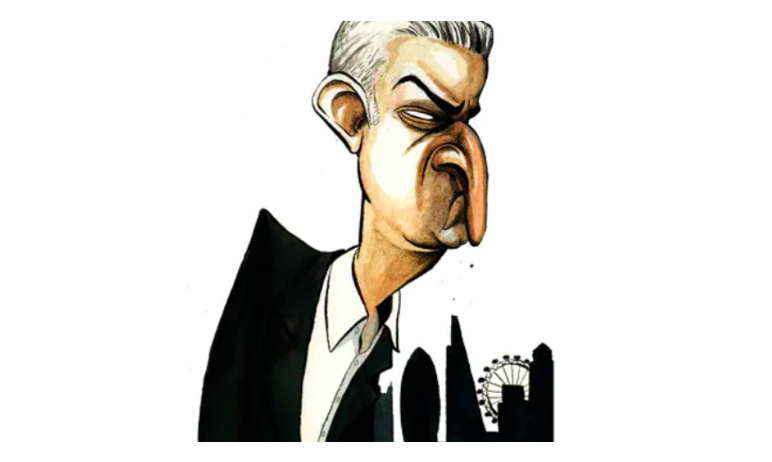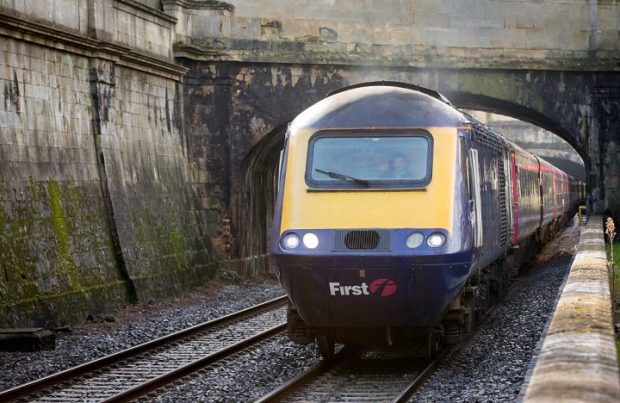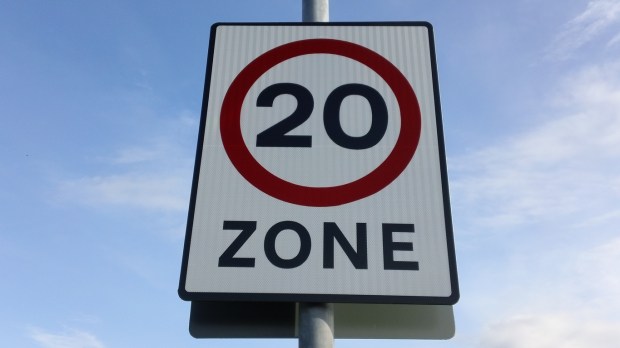Let’s take a look into a political crystal ball: it is Friday 7 May and a beaming Sadiq Khan is being held aloft by delighted Labour supporters celebrating his remarkable achievement of being re-elected Mayor of London on the first ballot.
For the first time ever the second preference votes do not need to be counted because of the diminutive Khan’s round one landslide. Most of Britain’s London-based political media decides that this is the big story to focus on. Labour party activists are happy to believe their party is on the way back and that Khan’s brand of chippy identity politics points the way ahead. The trouble is that such a reading is precisely wrong. The problem is not even that winning commandingly in London and other big cities is insufficient for Labour, but that these days it is actually antithetical to its hopes of ever again becoming the biggest party in the House of Commons.
A look at the political map of Britain underlines the point. It is overwhelmingly blue save for three distinct sorts of red patches.
The most sizeable of these by far are the clusters of big city seats forming notable red blocks – across London, where fully a quarter of Labour MPs have their seats, but also in Bristol, Liverpool, Manchester, Sheffield, Leeds, Bradford, Leicester, Nottingham, Newcastle and Birmingham.
Then there is a smattering of more isolated red dots. Generally these are smaller university cities – Oxford East, Cambridge, Norwich South, Canterbury, Brighton, Exeter, York, Warwick and Leamington, Durham and Lancaster are the obvious examples.
Finally there is the curiosity of a cigar-shaped strip of 21 contiguous constituencies across South Wales which includes the Cardiff seats but mainly covers small post-industrial towns.
It has often been said that the Tories will eventually be brought down by a demographic ‘time bomb’. In fact this map provides plenty of clues that the opposite is happening. The big city seats have turned Labour, often by landslide majorities that reflect local populations dominated by Labour-voting ethnic minority communities and public sector professionals. Such audiences are more likely to lap up a diet of ID politics based around such notions as structural racism or a malevolent Conservative party deliberately driving down living standards among the welfare-dependent.
The same is true of the university cities, where there is typically much less poverty, but a still greater interest in highlighting British colonial guilt, white racism in general and strident identity-based opposition to Brexit.
Norwich South MP Clive Lewis is unlikely to suffer a marked loss of local support over his tweet comparing living in Britain now as someone from an ethnic minority background to living in the US Deep South during the heyday of the Ku Klux Klan. Neither will Labour frontbencher Marsha de Cordova face oblivion in Battersea for her absurd claim that the Sewell Report into racial disparities was ‘glorifying’ the slave trade.
But in the three quarters or so of English constituencies that do not cover inner-cities or contain a dominant university population such attitudes amount to political kryptonite.
One can see the impact of all this in the drift of ordinary English towns to the Tories. For instance, in Nottinghamshire only the three Nottingham city seats are held by Labour. All the others – including relatively deprived towns such as Mansfield have gone Tory. The musings of Nadia Whittome about pulling down statues or not condemning violence against the police are hardly likely to kill off her chances of holding on to her Nottingham East seat where she has a 17,000 majority. But to voters in surrounding seats they give off an intensely off-putting odour.
In Birmingham, Labour has never been more dominant on the parliamentary map. But its rise and rise on the back of demographic change has coincided with nearly all the towns of the neighbouring Black Country – where more socially conservative attitudes flourish – turning Tory.
Conservative incumbent Andy Street is now heavily odds-on to be re-elected West Midlands Metro Mayor in May. Likewise for Ben Houchen in the Tees Valley.
The only significant exception to the general drift of town seats to the Tories comes in South Wales, where so far Labour has managed to hang on in force to its old socially conservative working class base.
It is surely not mere coincidence that the population of Wales is 95 per cent white and that the metropolitan ID politics culture has not intruded to nearly such an extent as it has in England. Class-based politics is still the norm and Labour is further aided by an intensely anti-Tory historical political tradition.
But Labour can hardly draw much comfort from the exception that proves the rule, especially as Left Wokeness is bound to gatecrash proceedings even here sooner rather than later.
During Labour’s response to the Sewell Report, its left-wing MPs queued up to convey the message ‘Britain is deeply racist and you white people are awful. Vote Labour’. The best that Keir Starmer and senior frontbenchers such as Lisa Nandy could come up with was the idea that while Britain was generally a good country, the problem of ‘structural racism’ was still leading to major discrimination against non-white people and much more must be done to tackle that.
That’s not what they think in the Red Wall towns, where the life chances of white working class youngsters hit rock bottom in the first two decades of this century. The sight of Sadiq Khan celebrating on the television news next month is not going to convince them that Labour understands their lives.
Got something to add? Join the discussion and comment below.
Get 10 issues for just $10
Subscribe to The Spectator Australia today for the next 10 magazine issues, plus full online access, for just $10.




















Comments
Don't miss out
Join the conversation with other Spectator Australia readers. Subscribe to leave a comment.
SUBSCRIBEAlready a subscriber? Log in